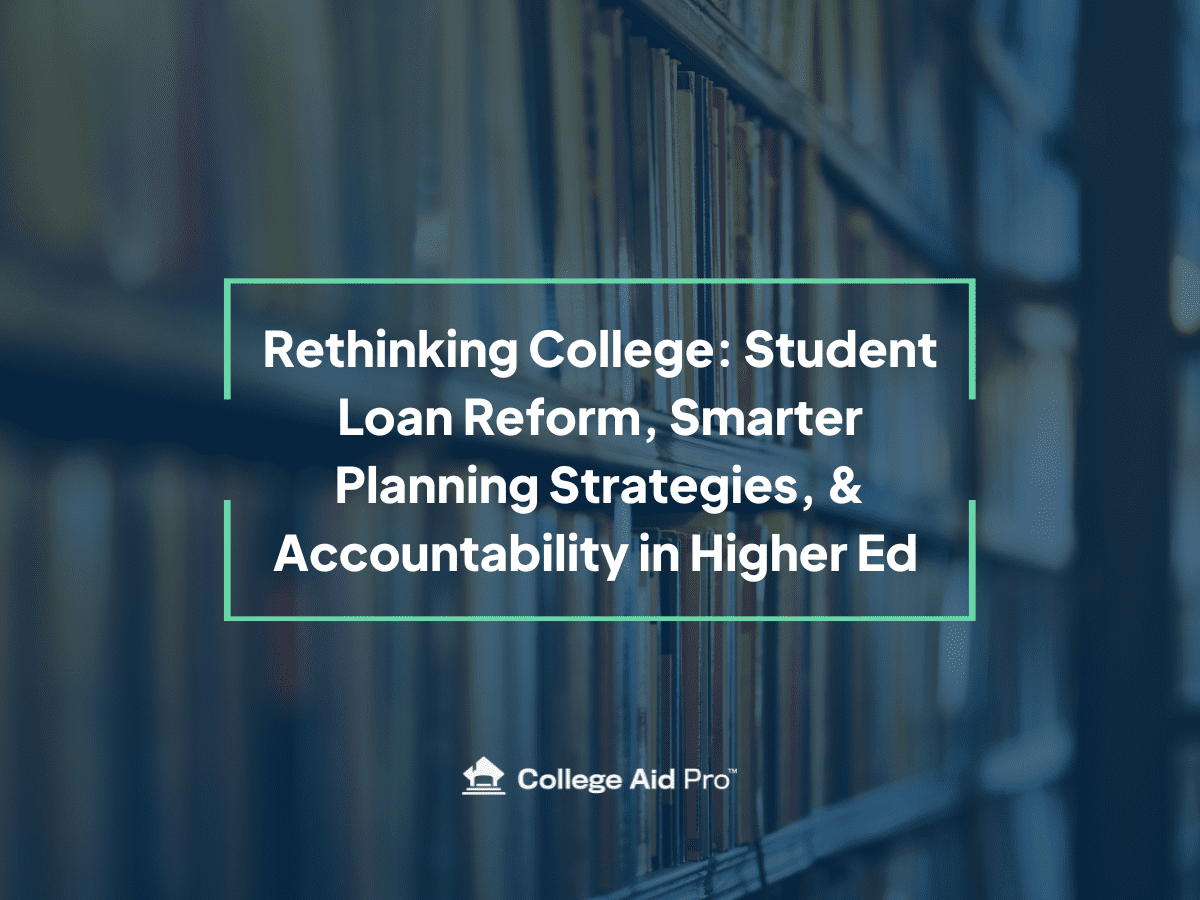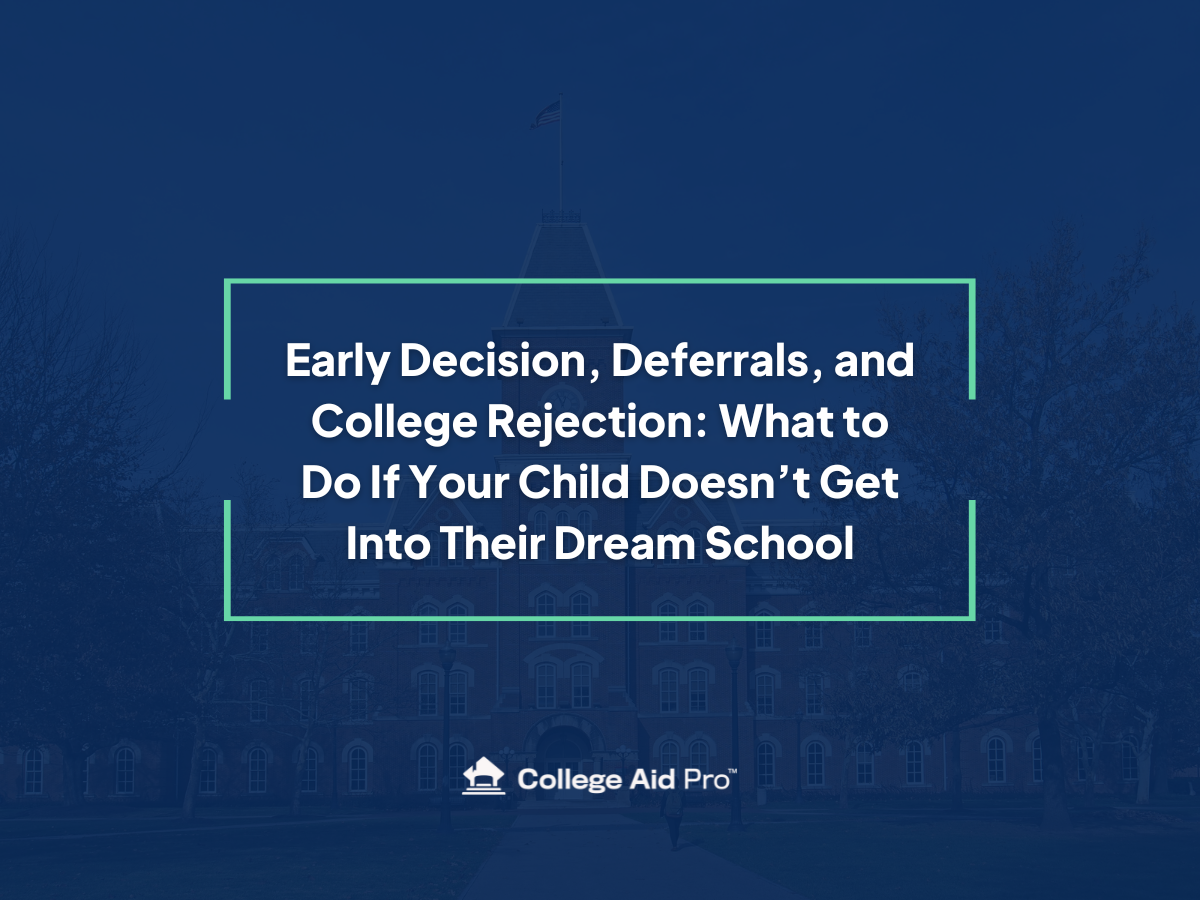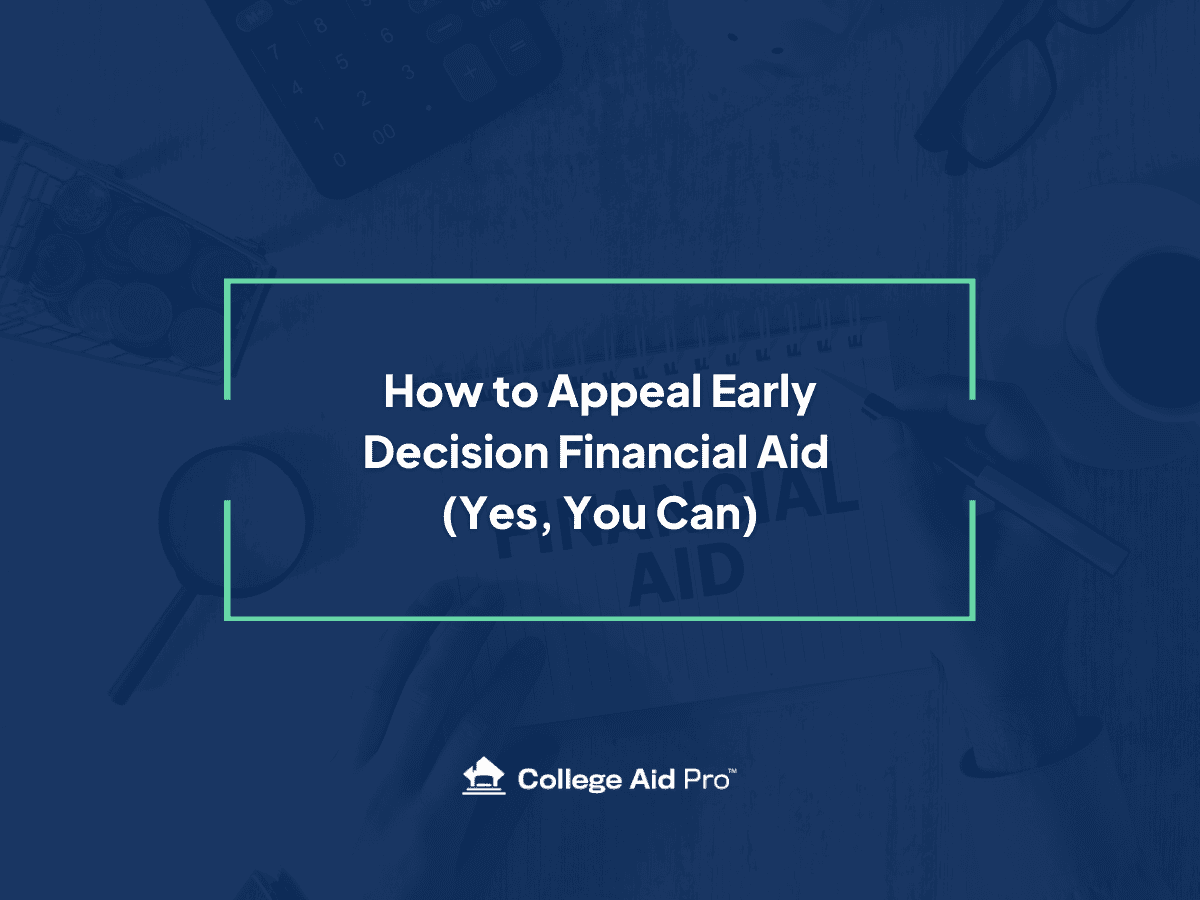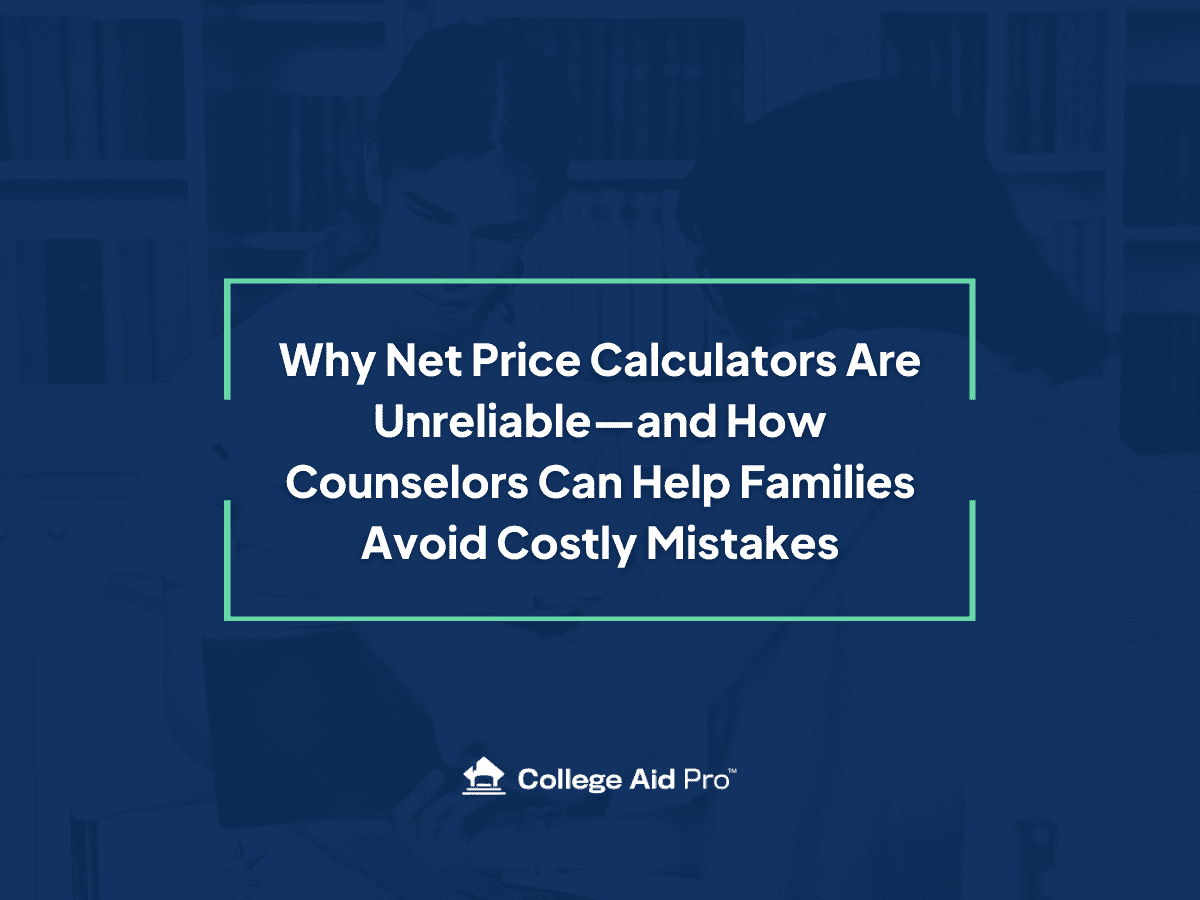Rethinking College: Student Loan Reform, Smarter Planning Strategies & Accountability in Higher Education
Let’s face it—the college funding system is in desperate need of a refresh. With tuition costs climbing and student loan debt becoming a burden for so many, it’s clear that something isn’t working. But here’s the thing: maybe this is exactly the moment we need to start talking about real change. What if we could rebuild the whole system from the ground up? What if we could rethink how college is funded, how families plan, and how schools are held accountable for the price they charge? At College Aid Pro, we’re not claiming to have all the answers, but we’re ready to start the conversation. It’s time to think outside the box, challenge old systems, and come up with bold, creative ideas that could make college more affordable and accessible for everyone. It’s a discussion worth having—and we’re here to get it started.
Key Takeaway: It’s time to start the conversation about rebuilding the college system from scratch and finding better ways forward.
Should We Eliminate Federal Student Loans?
Should we just scrap federal direct student loans altogether?
Essentially, the Federal Direct Student Loans offer students up to $27,000 over four years with no credit check and no cosigner for the student. For many, it’s a manageable amount, especially when compared to the massive six-figure debts tied to private loans. Peg, however, is quick to point out the loan’s value, sharing how it helped her own daughter, a social work major, make it through school. For lots of students, this low-interest, flexible loan can really be helpful.
A critical counterpoint, one that echoes what CEO Kevin Degnan has mentioned in previous episodes: Could federal loans be inadvertently fueling tuition hikes? If every student is guaranteed $27,000, is that just becoming the baseline for colleges to set their prices? Are we, as a society, essentially writing a blank check to institutions?
While they both agree that the Parent PLUS loan is likely the bigger culprit in the systemic issues, they encourage everyone to think about whether even well-meaning federal aid could be contributing to the very problems we’re trying to solve.
Key Takeaway: Let’s question whether federal loans, despite their good intentions, could be driving up costs and creating bigger problems for students.
The Problem with Parent PLUS Loans
Peg and Matt don’t hold back when discussing the Parent PLUS loan, calling it “the biggest problem” in the current financial aid landscape. Unlike federal student loans, PLUS loans come with no meaningful caps. Families can borrow tens—even hundreds—of thousands of dollars per year regardless of income or creditworthiness.
These loans, the hosts argue, are fueling the affordability crisis and need immediate reform. Peg proposes a radical yet logical idea: what if we kept only the federal direct student loan and the Pell Grant and eliminated everything else? If families can’t afford college without relying on excessive borrowing, maybe that school simply isn’t the right financial fit.
A Call for Consumer Accountability
Perhaps the most impassioned part of the episode comes when Peg challenges families to take ownership of their role in the college planning process. As she puts it, “There’s really no excuse not to dig in.”
Too often, families get swept up in the emotional side of college decisions—chasing brand-name schools, ignoring budget realities, or assuming loans will magically be forgiven. Matt likens this avoidance to skipping dentist appointments: uncomfortable but necessary.
Instead, they advocate for a proactive, educated approach to college planning, beginning with calculating your Student Aid Index (SAI), understanding institutional aid, and creating a strategic list of schools that align with your academic, cultural, and financial fit.
Parents this is your wake up call to start taking accountability of your student’s college planning journey! Listen Here to Find Out How.
Final Thoughts: Simple, Not Easy
The path to a debt-free college experience is possible, but it requires intention, research, and discipline. Much like investing, success isn’t about following the latest trends—it’s about creating a plan, sticking to it, and making thoughtful, informed decisions. College planning is a long-term process, and staying focused on the bigger picture can help families avoid costly mistakes and set students up for success without unnecessary debt.
Key Takeaway: A debt-free college experience is within reach—get proactive and stay disciplined in your planning!
Follow our podcast! College! brings honest, sometimes uncomfortable truths to the surface—and arms families with the tools to make smarter decisions.



